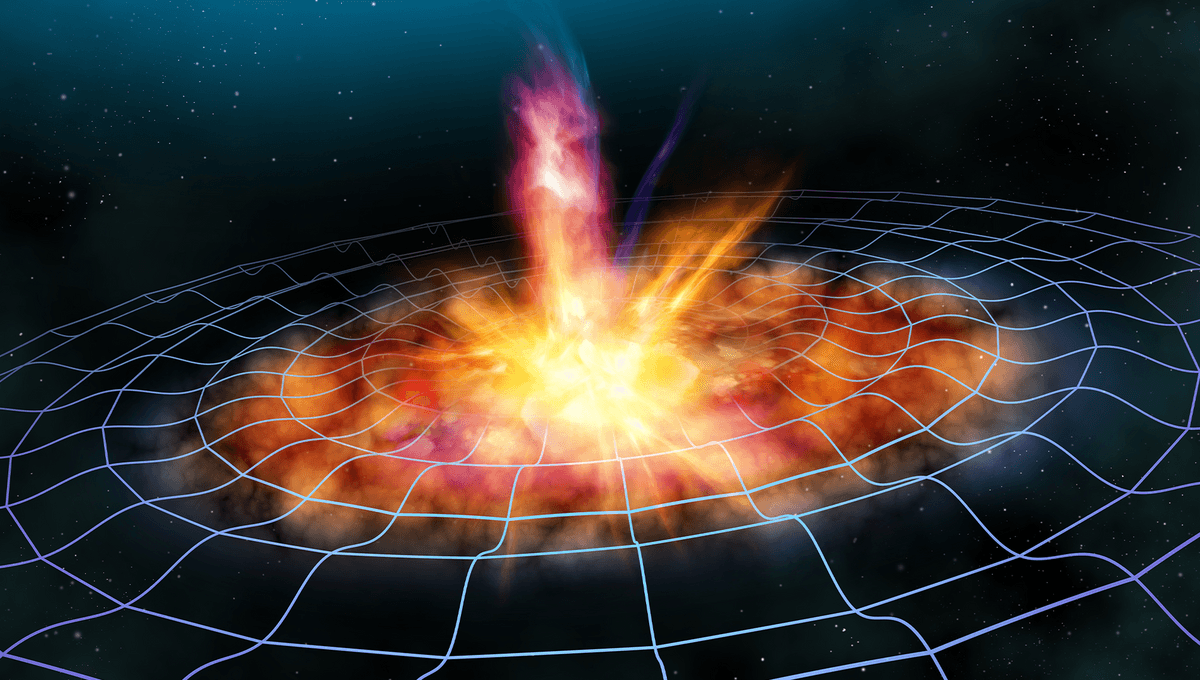
Over the last eight years, the world’s three gravitational wave observatories have delivered on their potential, detecting some of the most extreme events in the universe: black hole mergers and neutron star collisions. Now after three years of downtime for upgrades and improvements, they are about to turn on again. The goal now is to find plenty more mergers and with even more sensitive equipment, hopefully, some elusive events that have yet to be discovered.
On that front things are looking pretty good already. Just last week, even though still in its engineering run, the LIGO gravitational wave observatory in the US detected a candidate event that has been sought after for a while: a black hole eating a neutron star. Though it’s not certain that this is the case, astronomers say there is an 86 percent probability that it was a neutron star collision merging with a heavier black hole. If confirmed, it would be the first of this type of detection.
“I would like to see a neutron star-black hole merger with an electromagnetic counterpart,” Assistant Professor Dr Barbara Patricelli told IFLScience when we visited Virgo, the European gravitational wave observatory, in March. Such a merger is expected to see a black hole ripping a neutron star apart before swallowing it; the process should release a lot of light across many wavelengths, the elusive “electromagnetic counterpart.” Dr Patricelli almost got her wish but so far that potential detection has not been seen with any type of light.
Currently, it has only been seen in the historic detection of two neutron stars merging, known as a kilonova, so seeing light from the merger of two black holes or a black hole and a neutron star would be an incredible achievement. By detecting more events with better precision and sending out faster communications, the various teams hope to give astronomers better chances to make those detections. Seeing light and maybe even detecting neutrinos from those events would give us unprecedented insights into these cosmic collisions.
The increased sensitivity of the detectors means that they are able to find black holes up to 1,000 times the mass of the Sun. This is a whole new class of objects, the elusive intermediate-mass black holes – black holes that could not have formed from a star going supernova. So far the heaviest object detected has been two black holes merging in a single one with a mass of 142 times the Sun.
The detectors might also spot massive stars going supernova within a few tens of million light-years from Earth, so, hopefully they were on when one happened in the Pinwheel galaxy last week as the event was from a star massive enough to be detected. Researchers will also continue to use the detections to test Einstein’s theory of general relativity.
There are currently four working gravitational wave observatories in the world with a few more under construction. The Two LIGOs (Laser Interferometer Gravitational-wave Observatory) are in the US (one in Louisiana and one in Washington State), Virgo is in Pisa, Italy, and KAGRA is in Japan. Virgo won’t join the rest immediately for the new run as the team is taking a bit more time to make sure the detectors work to their best ability, while LIGO turned on today. KAGRA is set to run for one month before taking another break to troubleshoot and will start up again in 2024.
These observatories work by sending a split laser beam down two equal length-arms 90 degrees apart. The lasers bounce on mirrors and come back toward the source. The system is designed so that if the two laser beams have traveled the same distance they will completely cancel each other out. But gravitational waves change the structure of space-time so one beam will travel more than the other if a wave is passing, and light will be detected when there shouldn’t be.
The systems are so sensitive that they can measure changes less than a fraction of an atom in size and so sophisticated that they can reduce the regular shaking of the planet by one trillion times. During our visit to Virgo, we learned that the major source of “noise” for the detectors there is actually the waves in the Tyrrhenian Sea over 22.5 kilometers (about 14 miles) away.
On top of the incredible technical achievements and the possible new science, these instruments have the ability to discover the unexpected. Scientists have also used them to test quantum events, not just space observations.
The new fourth run will be 18 months long, with short breaks for tweaks, so it will likely extend well into 2025 meaning we may not get the new detection data until then. However, for those eager to follow the experiments, real-time notification of limited data will be available via a smartphone app.
Source Link: Hunt For Gravitational Waves Is Back On After 3 Years – What Are We Hoping To Find?